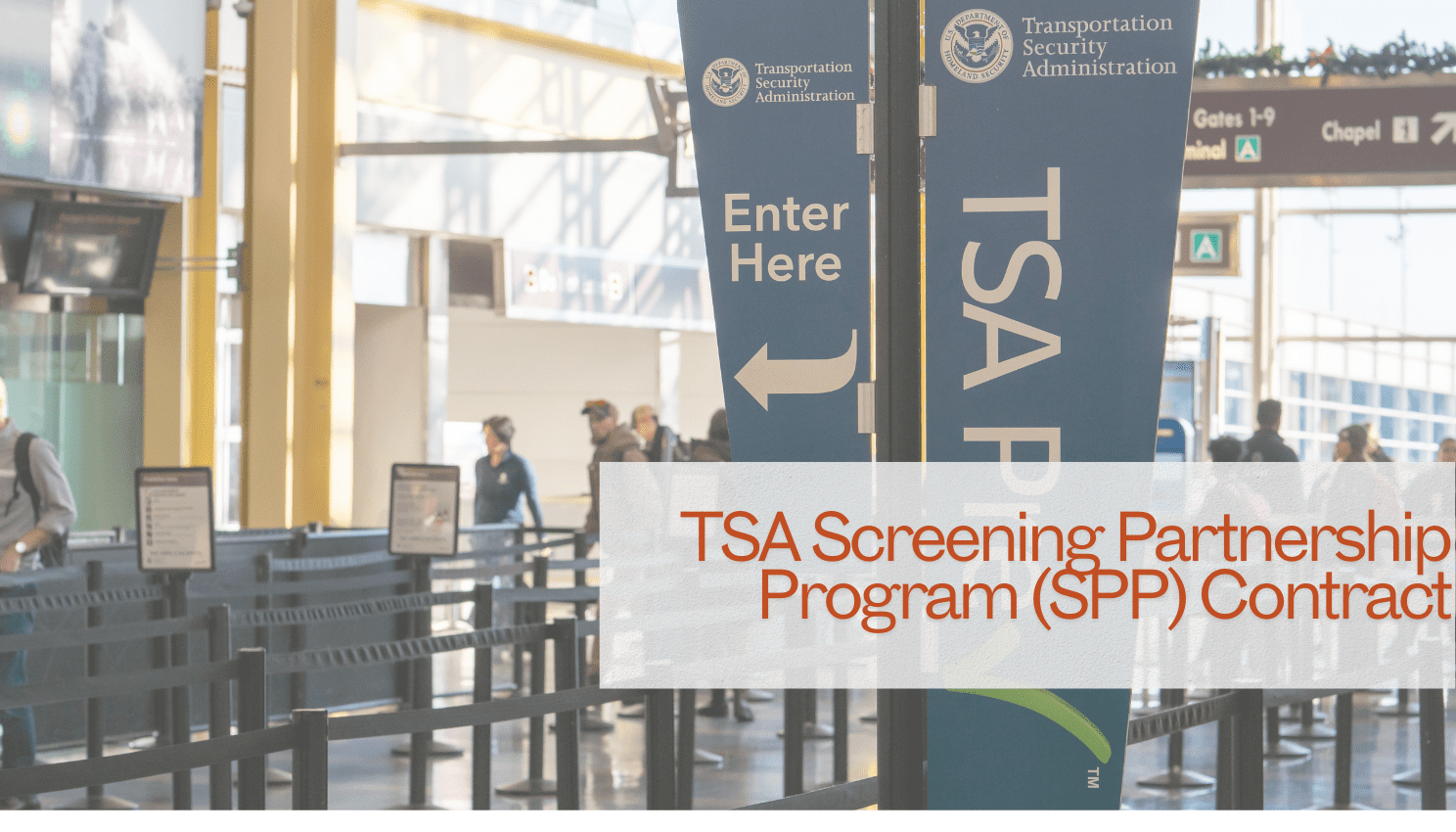The Screening Partnership Program (SPP) is administered by the Transportation Security Administration (TSA) and allows commercial airports in the United States to use private security companies for passenger and baggage screening instead of TSA personnel.
The Screening Partnership Program (SPP):
- Was established in 2004 following a pilot program mandated by Congress after 9/11
- Allows airports to apply to use qualified private companies for screening services under TSA oversight
- Requires private screening companies to follow all TSA security procedures and use TSA-approved equipment
- Mandates that TSA maintain overall responsibility for transportation security at participating airports (currently 22, to include San Francisco and other smaller, regional airports)
The current contracts all expire at the end of May 2026, so the Department of Homeland Security (DHS), on behalf of the TSA, is preparing to launch the next major contracting action supporting the SPP.
What We Know About Screening Partnership Program (SPP): In late June of this year, the TSA announced a mid-July Industry Day to kick off the festivities. From that day and from other available information, we know that the TSA has placed a ceiling value of $5.5 billion and is anticipating an expansion of the potential airports using the program. It will most likely be a full and open competition, but it is expected there will also be a small business set-aside (SBSA) when the final RFP is released. The program will have a 10-year base period of performance with a small business size standard of $40 million under NAICS 488190, Other Support Activities for Air Transportation.
Screening Partnership Program (SPP) Schedule: No draft RFP has been released, but the planned release date is November 1. From the looks of the data available, the number of potential contracts has been reduced from the 27 currently in place to a total of 15 under the new acquisition. Total contract spend under the current contract has been $1.5 billion, so the anticipated new ceiling represents a 3x plus increase in the amount expected to be spent under the new contracts. We can expect a similar spend pattern as the expiring program — with probably two thirds of the spend going to Other than Small Business (OTSB)and the remaining third being in the small business set-aside (SBSA).
LOE Increase: Per the Industry Day Q&A, the TSA understands that the new program may well produce an increase in the number of airports applying for the program. They understand a change in ceiling and some sort of on-ramp program may be necessary to support that influx.
Where We Stand Today: Even though the available information indicates an imminent release of an RFP (draft or otherwise), the program could move to the right. It’s expected that there will be some substantial transition-in period for the incumbent contract personnel to move to the new winning contractors. So, the TSA might release this on time so that awards can be made, and transitions can begin well in advance of the current contracts’ expiration. In addition, all new personnel will have to undergo vetting by the TSA Personnel Security office, so this represents another reason for an extended transition-in period.
What to Do Right Now: Several steps need to be taken to best position your organization to win a contract:
- Start doing your due diligence – While no RFP has been released, there is sill quite a bit of information available for this program. Get this in your sales funnel now.
- Assuming an eminent RFP release, identify your proposal team – this is not expected to be an “evidence-based” procurement, so expect to write multiple volumes. Expect there to be requirements to address corporate experience and expect task order management to be required response area. Also, expect a heavy burden on transition activities and on recruiting and staffing. Start getting your stories and “best practices” identified and in the content development process.
- Identify your proposal team – you’re going to need an experienced Proposal Manager and 2 or more Technical Writers, and probably a Graphic Artist. Depending on size of the response, a Coordinator might be advisable.
Assistance is Available: OCI can assist you in preparing a winning proposal. Perform a Proposal Readiness Review (PRR) – In 40 hours or less, a consultant will help identify your strengths and weaknesses and how heavy is the lift. Two types of service available:
- Whole proposal where we provide an entire team. Or,
- Staff augmentation where we help fill in talent missing from your team.
Consultants with TSA experience. Proposal Manager, Tech Writer, Proposal Coordinator, Graphic Artist, Color Team Reviewer, and others. If you need help, now is the time to reach out.






Leave A Comment